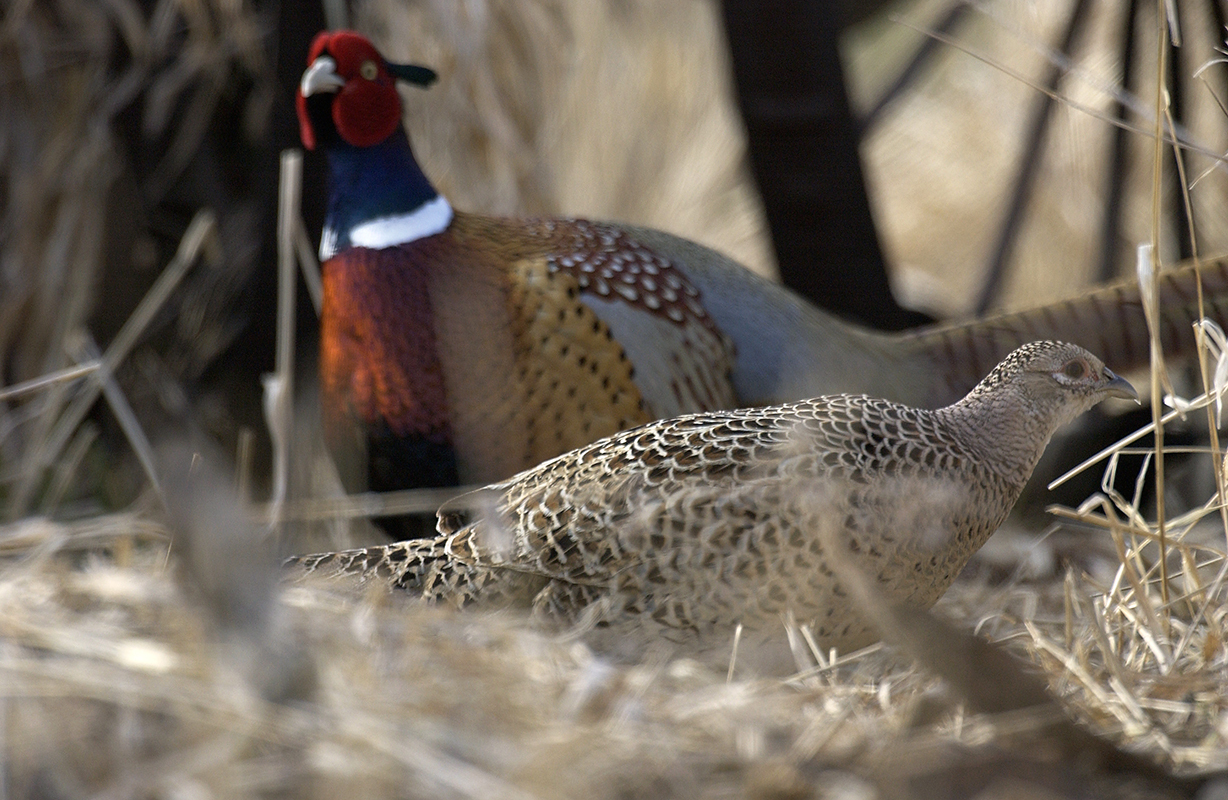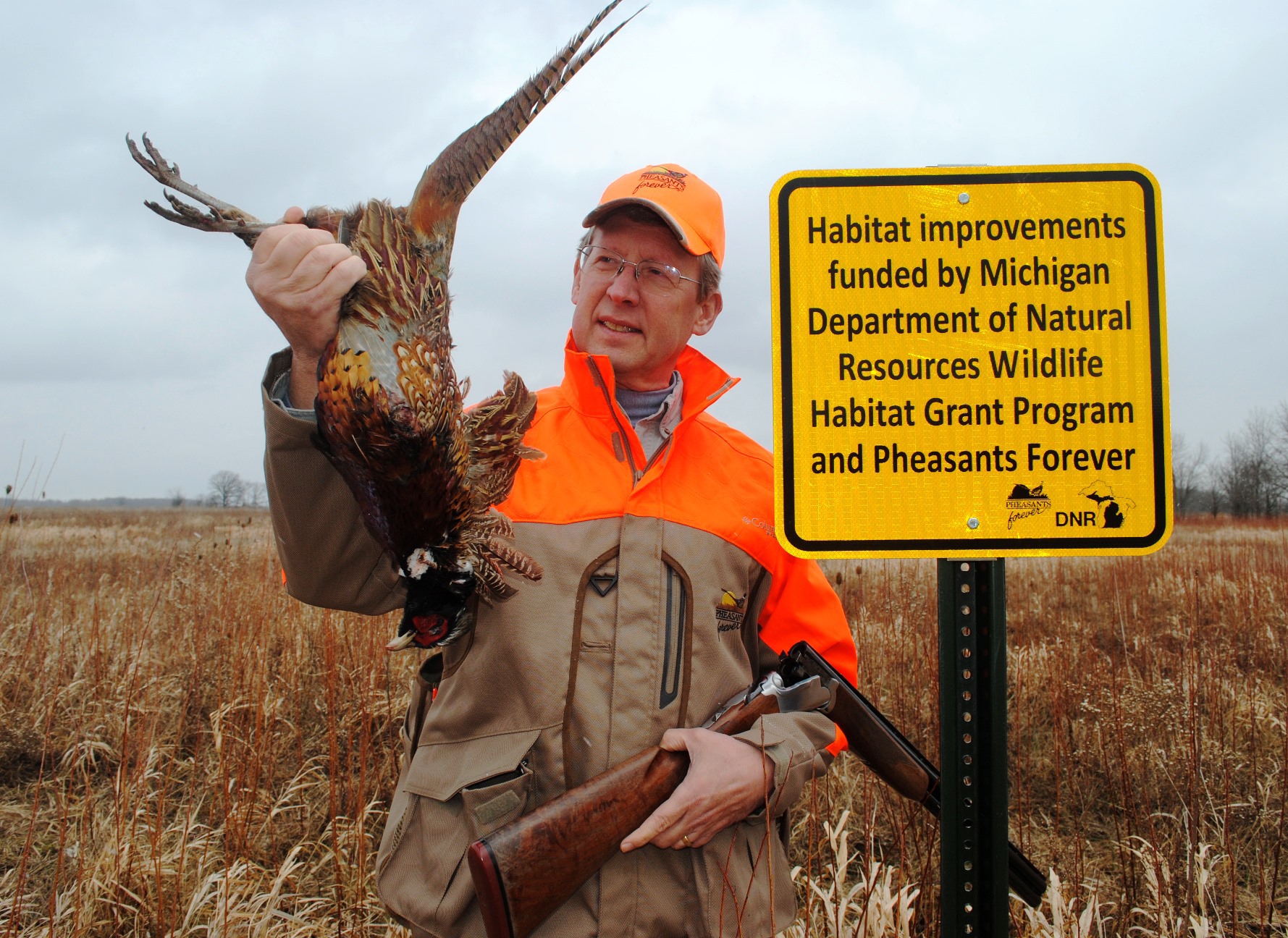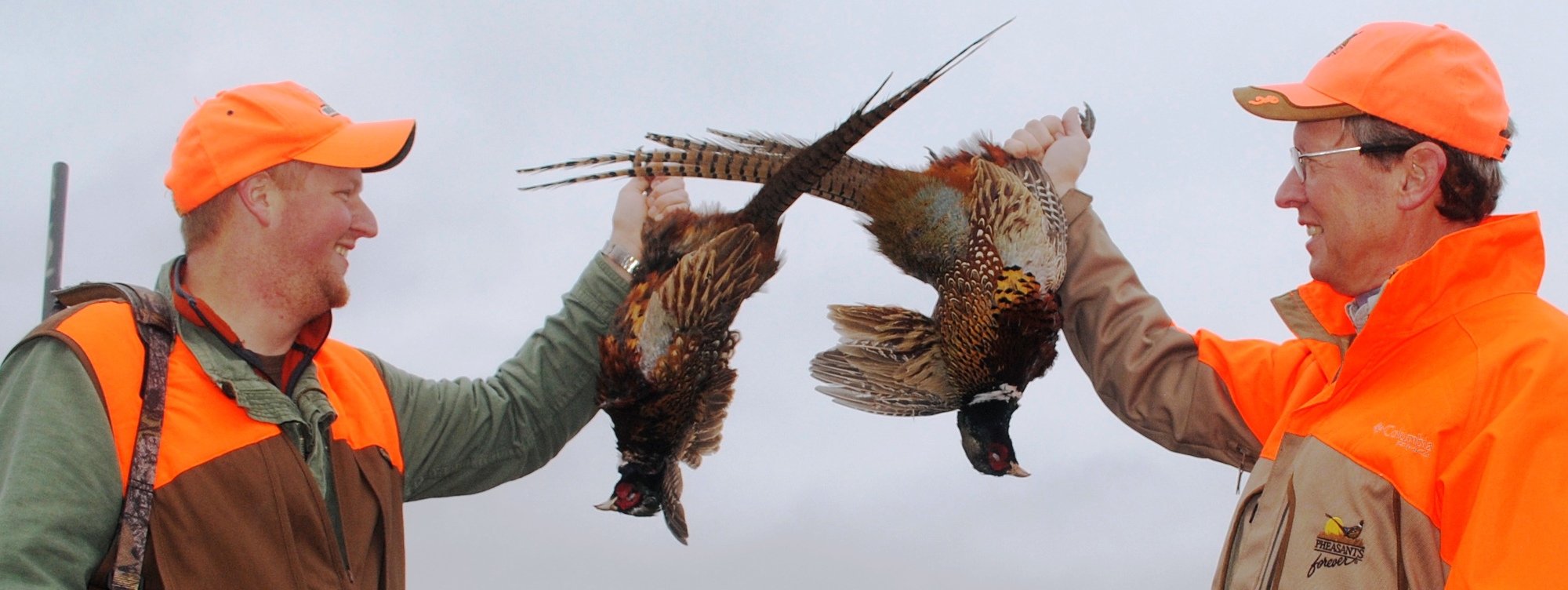DNR marks progress at halfway point in 10-year Michigan Pheasant Restoration Initiative
A few years ago, when the Michigan Department of Natural Resources announced it was putting together a coalition to rehabilitate pheasant hunting in Michigan, it assembled an impressive array of partners to address many of the problems that led to the declining fortunes of “ringnecks.”
Now, halfway through the 10-year project, those involved in the Michigan Pheasant Restoration Initiative say the program has made significant headway.
 “We are seeing enhanced partnerships, excellent teamwork, habitat improvements and increased enthusiasm for pheasants and pheasant hunting,” said Al Stewart, the DNR’s upland game bird specialist. “We are seeing enhanced partnerships, excellent teamwork, habitat improvements and increased enthusiasm for pheasants and pheasant hunting,” said Al Stewart, the DNR’s upland game bird specialist.
The coalition began the pheasant initiative by establishing three pilot focus areas, concentrating efforts in areas that offer some of the best remaining pheasant habitat in the state.
These priority Pheasant Recovery Areas each have three counties and are situated in the “Thumb Area” (Huron, Tuscola and Sanilac counties), central Michigan (Gratiot, Saginaw and Clinton counties) and southeastern Michigan (Hillsdale, Lenawee and Monroe counties).
Since the “golden days” of Michigan pheasant hunting in the 1950s, changes in agricultural practices and land use have contributed to pheasant habitat loss, declining food sources and lower production of chicks.
Over the first five years of the Michigan Pheasant Restoration Initiative, the DNR has enhanced or restored roughly 7,400 acres of grasslands on state game, wildlife and recreation areas and established 3,160 acres of food plots.
Another 556 acres of enhanced grasslands and 203 acres of food plots have been cultivated around the Sharonville State Game Area, just to the north of the Hillsdale-Lenawee-Monroe focus area.
In addition, the DNR has acquired 742 acres to add to existing game areas within the Pheasant Recovery Areas. There have also been 765 acres of grasslands and 2,000 acres of food plots established at the Allegan State Game Area, which is located outside the existing focus areas.
“Things are really starting to happen,” Stewart said.
However, those significant improvements on state-managed land represent only one small part of the equation, as most of the state’s prime pheasant range – located in southern Michigan – is privately owned. of the state’s prime pheasant range – located in southern Michigan – is privately owned.
To address this, the initiative has helped establish cooperatives and hired a co-ops coordinator in the focus areas so private landowners can meet with other like-minded individuals to help improve habitat for pheasants across the landscape.
The DNR has funded five conservation district Farm Bill biologists, with more to come, to assist private landowners in habitat improvement projects. The money for the biologists was raised from the DNR’s recent license restructuring.
Jason Myers, a Farm Bill biologist who covers four counties working out of the Tuscola Conservation District, says 80 percent of his efforts are directed toward pheasant restoration projects.
He said much of his work involves finding cost-share programs for landowners and providing technical assistance for managing Conservation Reserve Program and Conservation Reserve Enhancement Program lands.
Under these two federal Farm Bill programs, farmland is removed from production in exchange for annual rental payments with the lands improved for conservation or environmental quality enhancements.
“I do a lot of habitat plans for guys,” Myers said. “We’re kind of like therapists in a way – kind of hold their hands through the process and make sure they do it right. I spend a lot of time visiting CRP and CREP lands to help landowners maintain them in the shape their supposed to be in.”
The work is paying off, he said.
“A couple of guys in the pheasant cooperatives have said they wouldn’t have done what they’ve done in the last few years if it wasn’t for the initiative,” Myers said. “Tuscola County had about 200 CRP and CREP contracts when I started. About 190 of them have re-enrolled and about half of those have added acreage.”
 Bill Vander Zouwen is the Michigan Region representative for Pheasants Forever, a group dedicated to conservation of pheasants, quail and other wildlife through habitat improvements, public awareness, education and land management policies and programs. Bill Vander Zouwen is the Michigan Region representative for Pheasants Forever, a group dedicated to conservation of pheasants, quail and other wildlife through habitat improvements, public awareness, education and land management policies and programs.
Vander Zouwen was a biologist and chief of the wildlife ecology section of the Wisconsin DNR for more than 30 years before returning to Michigan.
He praised the cooperation between agencies and hunters under the pheasant initiative.
“I’m impressed with the attention pheasants are getting and I’m happy to see it,” he said. “Pheasants are a priority of the DNR, a focus of the More Bang for Your Buck program. The DNR has really stepped up.”
Pheasants Forever has 30 active chapters in Michigan and focuses most of its attention on private land, dispensing seed for food plots to its members, though Vander Zouwen said "about 15 chapters put their money up for matching grants from the DNR to improve habitat on public land where anyone can hunt.”
The DNR has awarded State Wildlife Grants totaling more than $850,000 to benefit 49 projects that include almost 3,000 acres of grassland complexes.
Beyond the DNR and Pheasants Forever, other members of the Michigan Pheasant Restoration Initiative coalition include the Michigan Department of Agriculture and Rural Development, the National Wild Turkey Federation, the Quality Deer Management Association, Ducks Unlimited, the U.S. Fish and Wildlife Service and the U.S. Department of Agriculture.
These additional government and nongovernmental entities often focus on other priorities, but they value grasslands for everything from biodiversity to improving water quality.
“Doing work for pheasants is central for wildlife on the ground,” Myers said. “It helps everything from songbirds to white-tailed deer.” songbirds to white-tailed deer.”
And, of course, it helps pheasants.
Cooperative landowners say they’re hearing more crowing pheasant roosters in recent years, and some hunters report seeing more pheasants on state-managed land.
Despite these advances, much of the effort of the pheasant initiative has yet to bear fruit, but members say the seeds have been sown for the future.
“The coalition is committed to an even more productive next five years,” Vander Zouwen said.
To learn more about upland game bird hunting in Michigan, visit the DNR’s Web page.
/Note to editors: Contact: Al Stewart, 517-284-6221 or John Pepin, 906-226-1352. Accompanying photos are available below for download. Suggested captions follow.
Birds: Jason Myers, a Farm Bill biologist who covers four counties working out of the Tuscola Conservation District, left, and Bill Vander Zouwen, Michigan Region representative for Pheasants Forever, display a couple ring-necked pheasants they shot.
Dog: Jason Myers, a Farm Bill biologist who covers four counties working out of the Tuscola Conservation District, holds up a pheasant he shot. His dog, Duke, watches intently.
Improvement (DSK462 028): About a dozen volunteers from the Lenawee County chapter of Pheasants Forever recently showed up to work with Michigan Department of Natural Resources Parks and Recreation Division staff to take out an overgrown fence row between two grassy fields at the Lake Hudson Recreation Area. The goal is to create a large block of land that will be more hospitable to not only pheasants, but other grasslands residents as well. Pheasants Forever member Ken Parts helps clear a fence line in between two large grass fields.
Profile (DSK59 129): A male, in the background, and female ring-necked pheasants are shown. The species was introduced to the United States from Asia in the late 19th century.
Pheasant: Bill Vander Zouwen, Michigan Region representative for Pheasants Forever, looks at a male pheasant he shot in an area where habitat improvements have been made in Lower Michigan.
An additional photo of DNR upland game bird specialist Al Stewart also is available below./
The Michigan Department of Natural Resources is committed to the conservation, protection, management, use and enjoyment of the state’s natural and cultural resources for current and future generations. For more information, go to www.michigan.gov/dnr.
|

 “We are seeing enhanced partnerships, excellent teamwork, habitat improvements and increased enthusiasm for pheasants and pheasant hunting,” said Al Stewart, the DNR’s upland game bird specialist.
“We are seeing enhanced partnerships, excellent teamwork, habitat improvements and increased enthusiasm for pheasants and pheasant hunting,” said Al Stewart, the DNR’s upland game bird specialist. of the state’s prime pheasant range – located in southern Michigan – is privately owned.
of the state’s prime pheasant range – located in southern Michigan – is privately owned. Bill Vander Zouwen is the Michigan Region representative for Pheasants Forever, a group dedicated to conservation of pheasants, quail and other wildlife through habitat improvements, public awareness, education and land management policies and programs.
Bill Vander Zouwen is the Michigan Region representative for Pheasants Forever, a group dedicated to conservation of pheasants, quail and other wildlife through habitat improvements, public awareness, education and land management policies and programs. songbirds to white-tailed deer.”
songbirds to white-tailed deer.”




